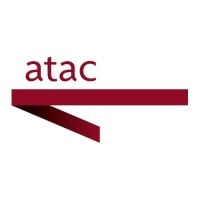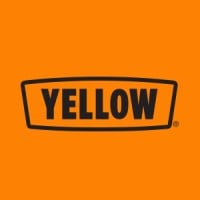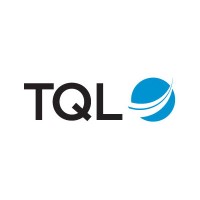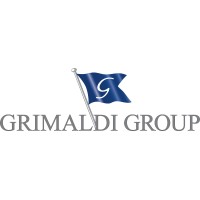
ATAC SpA Company Cyber Security Posture
atac.roma.itWith over 100 years of history, Atac is Rome's municipal utility for public transport services and Italy's leading urban mobility operator, as well as being one of the largest Local Public Transport companies in Europe. From the historical centre to the outskirts, Atac’s network covers a territory of about 1,300 km2: 15 operational sites among workshops and vehicle depots, over 8,200 bus, tram and metro stops, more than 300 surface terminals, 2,750 validators that allow contactless payment on the entire transport network, around 88,000 parking stalls (on-street and in park&ride car parks), over 2,000 Pay&Go and Pay&Go+ parking meters with digital payment - all integrated into a historical framework built over thousands of years - merge into a complex industrial and citizen services system. Atac carries over 940 million passengers per year (pre-pandemic data), of which around 3 million residents, as well as commuters, city users and tourists (over 58 million per year). With approximately 10 thousand employees, Atac operates a fleet of over 2,000 vehicles - buses, trams, trolleybuses, electric vehicles and metro trains. In addition to its official website atac.roma.it, the company has an active presence on all the main social channels.
ATAC SpA Company Details
atac-spa
10,001+ employees
14258
484
Truck Transportation
atac.roma.it
Scan still pending
ATA_1441052
In-progress
Between 900 and 1000
This score is AI-generated and less favored by cyber insurers, who prefer the TPRM score.
 ATAC SpA Global Score
ATAC SpA Global Score.png)

ATAC SpA Company Scoring based on AI Models
| Model Name | Date | Description | Current Score Difference | Score |
|---|---|---|---|---|
| AVERAGE-Industry | 03-12-2025 | This score represents the average cybersecurity rating of companies already scanned within the same industry. It provides a benchmark to compare an individual company's security posture against its industry peers. | N/A | Between 900 and 1000 |
ATAC SpA Company Cyber Security News & History
| Entity | Type | Severity | Impact | Seen | Url ID | Details | View |
|---|
ATAC SpA Company Subsidiaries

With over 100 years of history, Atac is Rome's municipal utility for public transport services and Italy's leading urban mobility operator, as well as being one of the largest Local Public Transport companies in Europe. From the historical centre to the outskirts, Atac’s network covers a territory of about 1,300 km2: 15 operational sites among workshops and vehicle depots, over 8,200 bus, tram and metro stops, more than 300 surface terminals, 2,750 validators that allow contactless payment on the entire transport network, around 88,000 parking stalls (on-street and in park&ride car parks), over 2,000 Pay&Go and Pay&Go+ parking meters with digital payment - all integrated into a historical framework built over thousands of years - merge into a complex industrial and citizen services system. Atac carries over 940 million passengers per year (pre-pandemic data), of which around 3 million residents, as well as commuters, city users and tourists (over 58 million per year). With approximately 10 thousand employees, Atac operates a fleet of over 2,000 vehicles - buses, trams, trolleybuses, electric vehicles and metro trains. In addition to its official website atac.roma.it, the company has an active presence on all the main social channels.
Access Data Using Our API

Get company history
.png)
ATAC SpA Cyber Security News
China’s Cybersecurity Regulator Summons Nvidia Over Chip-Security Issue
China's cybersecurity regulator has summoned Nvidia to discuss security risks of AI chips sold in China. The Cyberspace Administration of China ...
Industry groups urge vigilance as Scattered Spider evolves tactics
Information-sharing organizations warned their members that Scattered Spider continues to pose a major threat. Published July 31, 2025.
Ransomware gangs capitalize on law enforcement takedowns of competitors
Check Point's report paints a picture of new ransomware groups rising to prominence almost as soon as their predecessors collapse under the ...
AI Threats Raise Demand for Cybersecurity Products That Don’t Exist (Yet)
Artificial intelligence that handles complex tasks with minimal human oversight, also known as an agent, is creating a bevy of security ...
Army Secretary Directs West Point to Rescind Appointment of Biden-Era Cybersecurity Director
None
Cybersecurity upstart Legion emerges from stealth with $38 million from Accel, Coatue, and others
Legion, among Picture's first investments, is a security operations center (SOC) that uses AI to detect threats within users' computer browsers.
Cybersecurity leaders are upskilling for AI, focusing less on hiring, new data shows
Cybersecurity leaders are less stressed about hiring new talent and more worried about having the skills they need to tackle the AI-enhanced ...
Cybersecurity crime losses in Hong Kong up 15% in first half of 2025
Losses in first six months of year hit HK$3.04 billion, while those specifically from hacking attacks surged tenfold to HK$39.4 million.
Compliance obligations and liability frameworks in response to cybersecurity incidents in China
Failure to comply will result in legal consequences. Legal framework related to cybersecurity incidents. Following the promulgation of the ...

ATAC SpA Similar Companies

Yellow
Yellow, a Fortune 500 company headquartered in Nashville, TN is one of the largest super-regional less-than-truckload (LTL) companies in North America. Nearly 100 years ago, Yellow created the LTL industry, and now it comprises four successful regional LTL companies and an in-house logistics brokera

Total Quality Logistics
The logistics industry is a $500 billion market. With annual sales over $8 billion, Total Quality Logistics (TQL) is one of the largest freight brokerage firms in the nation. TQL connects customers with truckload freight that needs to be moved with quality carriers who have the capacity to move it.

DSV - Global Transport and Logistics
At DSV, we keep supply chains flowing in a world of change. We provide and manage supply chain solutions for thousands of companies every day – from small family-run businesses to large global corporations. Our reach is global, yet our presence is local and close to our customers. Approx. 75,000 e

Penske Logistics
Penske Logistics is a Penske Transportation Solutions company headquartered in Reading, Pennsylvania. The company is a leading provider of innovative supply chain and logistics solutions. Penske offers solutions including dedicated transportation, distribution center management, lead logistics, frei

Imperial
Imperial is an African focused provider of integrated market access and logistics solutions. With a focus on the following key industries - healthcare, consumer, automotive, chemicals, industrial and commodities - we take our clients’ and principals’ products to some of the fastest growing and most

Grimaldi Group
Established in 1947, Grimaldi is a fully integrated multinational logistics Group specialising in maritime transport of cars, rolling cargo, containers and passengers. Wholly owned by the Grimaldi family, the Group is led by Gianluca and Emanuele Grimaldi, sons of the founder Guido, and their broth

Frequently Asked Questions
Explore insights on cybersecurity incidents, risk posture, and Rankiteo's assessments.
ATAC SpA CyberSecurity History Information
How many cyber incidents has ATAC SpA faced?
Total Incidents: According to Rankiteo, ATAC SpA has faced 0 incidents in the past.
What types of cybersecurity incidents have occurred at ATAC SpA?
Incident Types: The types of cybersecurity incidents that have occurred include .
Incident Details
What are the most common types of attacks the company has faced?
Additional Questions
What Do We Measure?
















Every week, Rankiteo analyzes billions of signals to give organizations a sharper, faster view of emerging risks. With deeper, more actionable intelligence at their fingertips, security teams can outpace threat actors, respond instantly to Zero-Day attacks, and dramatically shrink their risk exposure window.
These are some of the factors we use to calculate the overall score:
Identify exposed access points, detect misconfigured SSL certificates, and uncover vulnerabilities across the network infrastructure.
Gain visibility into the software components used within an organization to detect vulnerabilities, manage risk, and ensure supply chain security.
Monitor and manage all IT assets and their configurations to ensure accurate, real-time visibility across the company's technology environment.
Leverage real-time insights on active threats, malware campaigns, and emerging vulnerabilities to proactively defend against evolving cyberattacks.




